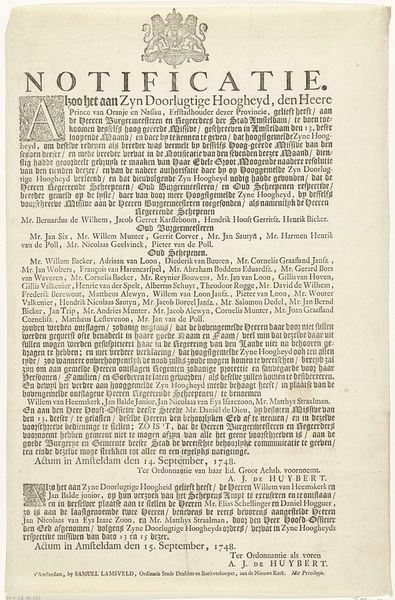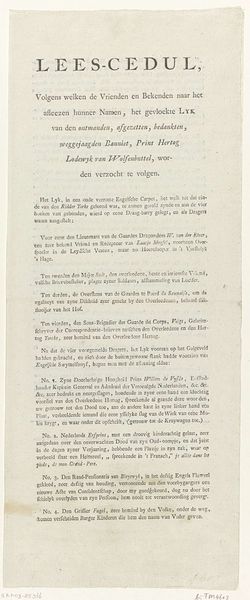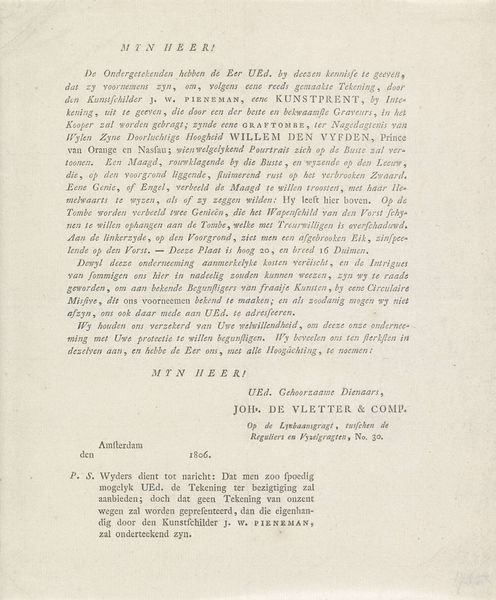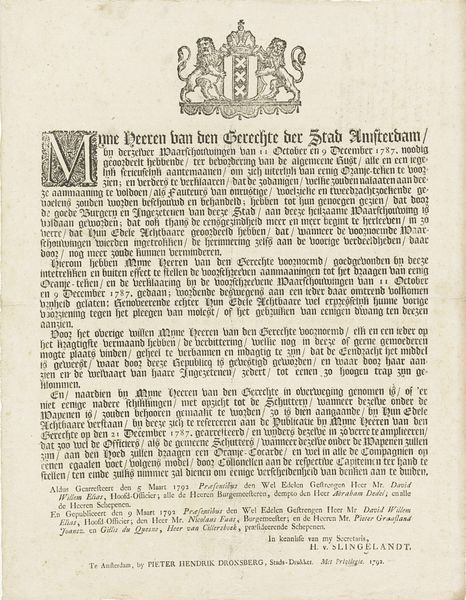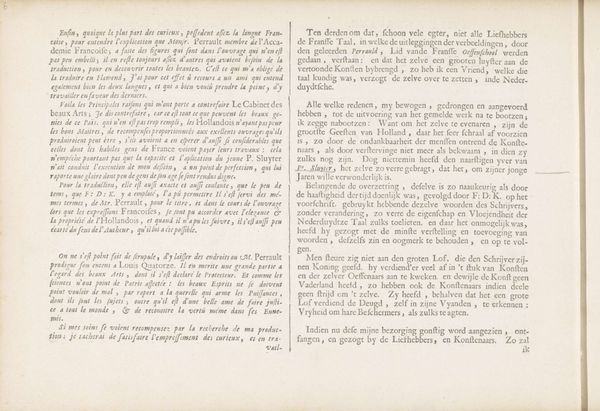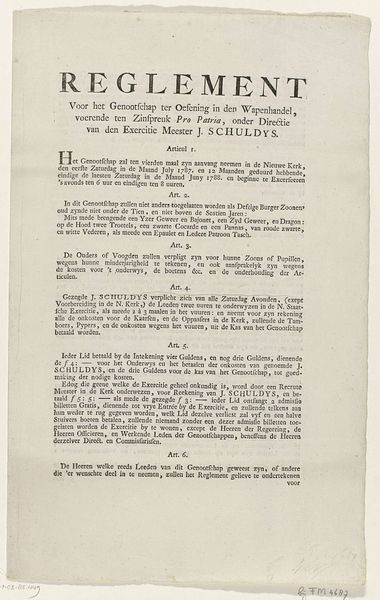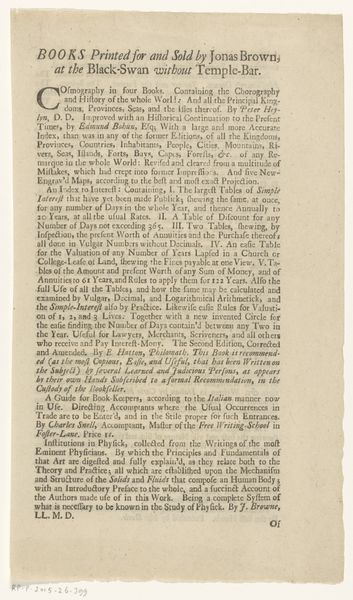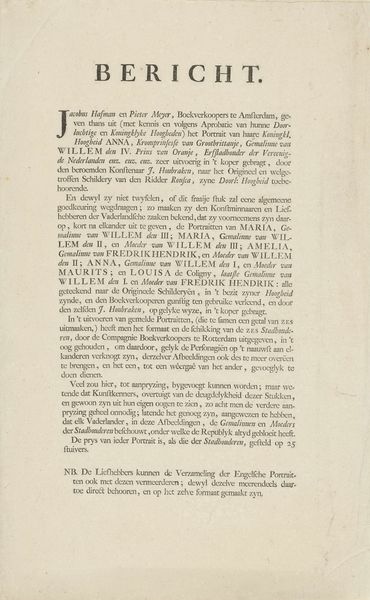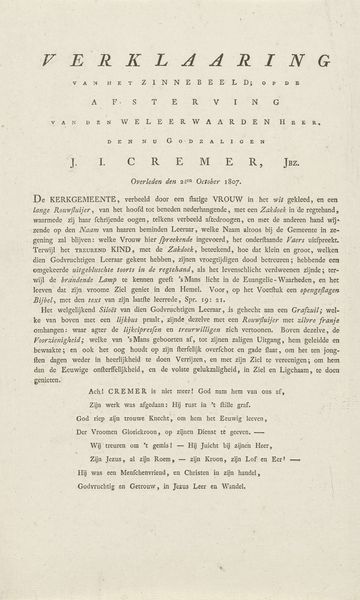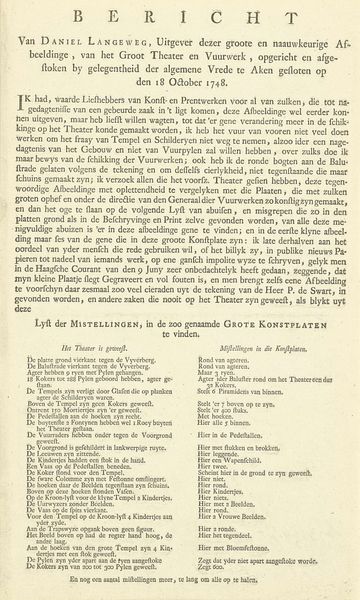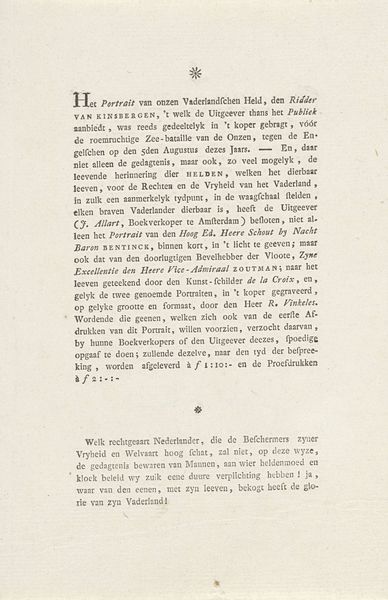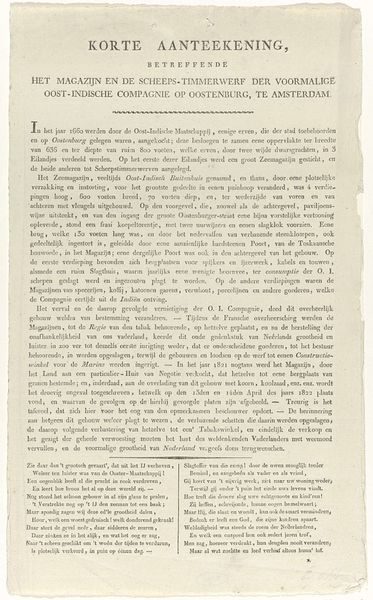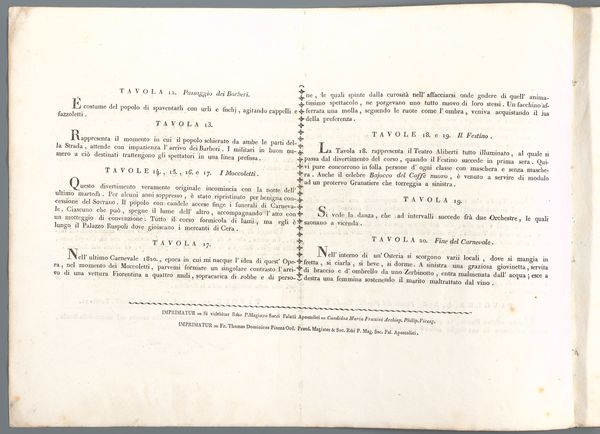
Bericht van de uitgever over de uitgave van de eerste twee platen van de serie Toneeldecors van de nieuwe Amsterdamse Schouwburg, 1787 1787
0:00
0:00
graphic-art, print, typography
#
script typeface
#
graphic-art
#
dutch-golden-age
# print
#
hand drawn type
#
paragraph style
#
typography
#
journal
#
script
#
stylized text
#
thick font
#
handwritten font
#
classical type
#
columned text
Dimensions: height 390 mm, width 250 mm
Copyright: Rijks Museum: Open Domain
Curator: This print, created in 1787, is entitled "Bericht van de uitgever over de uitgave van de eerste twee platen van de serie Toneeldecors van de nieuwe Amsterdamse Schouwburg." It’s a fascinating document related to the publication of stage designs. Editor: My initial impression is the overwhelming amount of text. It feels less like an artwork and more like a broadside or announcement—a purely functional object. Curator: And in some ways, you're right. It’s essentially an advertisement by Jan Willem Smit, a bookseller and art dealer, announcing the publication of a series of prints depicting stage designs for Amsterdam's new theatre. It's important because it reveals the business side of art production. Editor: The materiality intrigues me, though. It speaks volumes about 18th-century printing practices. I can see the texture of the paper and how the ink sits on the surface. Notice how much labor went into the hand-drawn typeface itself. Curator: Absolutely. And the announcement tells us about the artistic and economic context. It mentions that the famous engraver R. Vinkeles was initially involved, but then withdrew. It illuminates the practical challenges of art creation, how finances could dictate artistic decisions. It wasn’t just about inspiration, but who was going to actually put in the labor, who owned the means of production? Editor: And that scale is crucial. Switching to a smaller format was a strategic decision driven by cost considerations—it was cheaper for Kunstliefhebbers—art enthusiasts— to acquire. They're essentially democratizing the images by reducing the overall cost of materials. Curator: Exactly. It also provides insight into the popular taste of the time. There was a market for images of theatre sets. The descriptions themselves, ‘Het Gothisch Paleis,’ ‘De Moderne Zaal’ tell us what kinds of stories people wanted to experience. This shows us how cultural institutions, like theatres, were feeding this market. Editor: So it's a sales pitch disguised as art. By framing this announcement as part of a broader project, we get a picture of printmaking as craft. It reveals much about how materials, labour, and social demand are entangled within this one broadside. Curator: And for me, this is valuable for understanding the cultural significance of theater and visual representation within Amsterdam society during this time, making what would seem to be only a commercial document of true cultural significance.
Comments
No comments
Be the first to comment and join the conversation on the ultimate creative platform.
